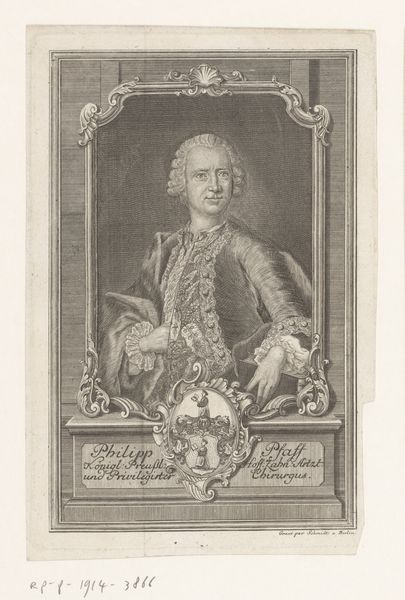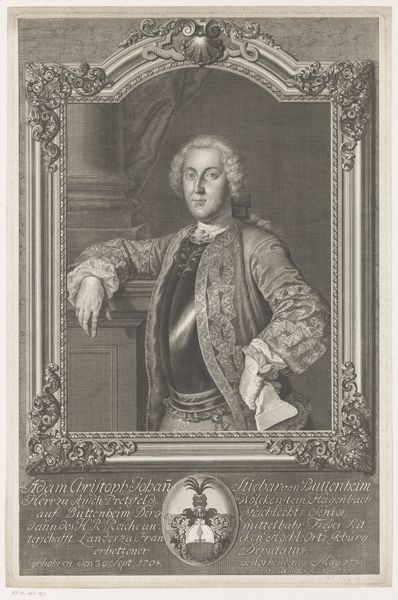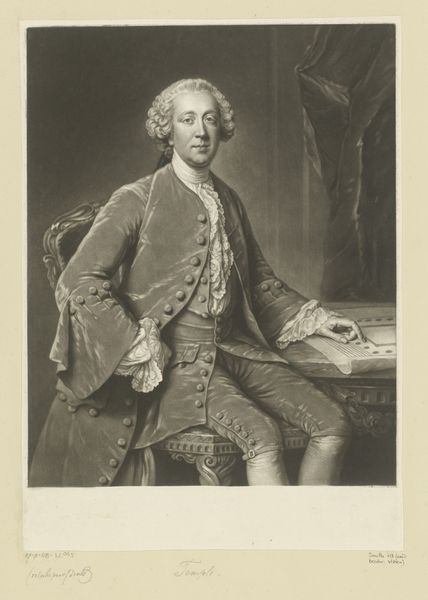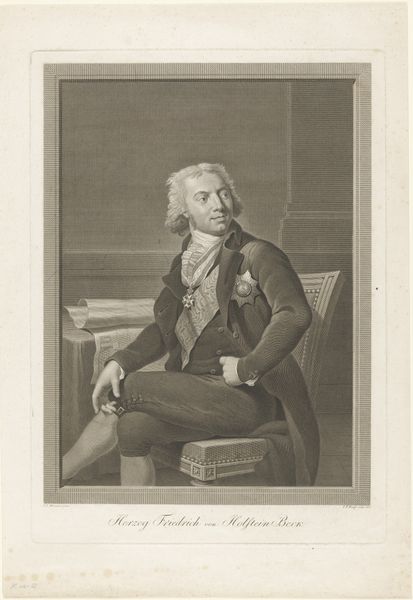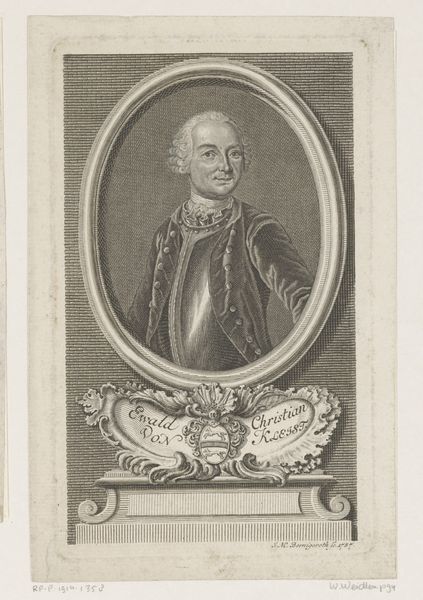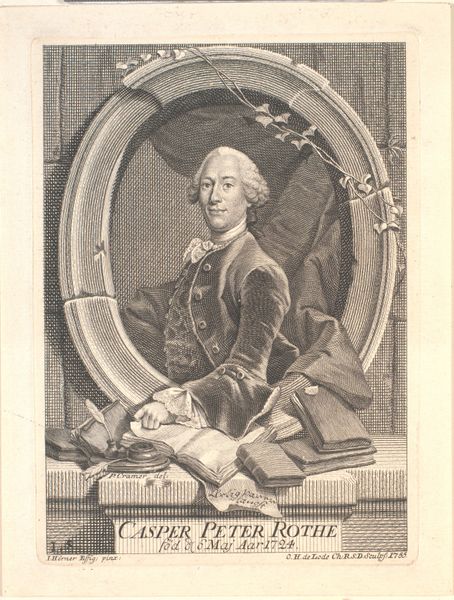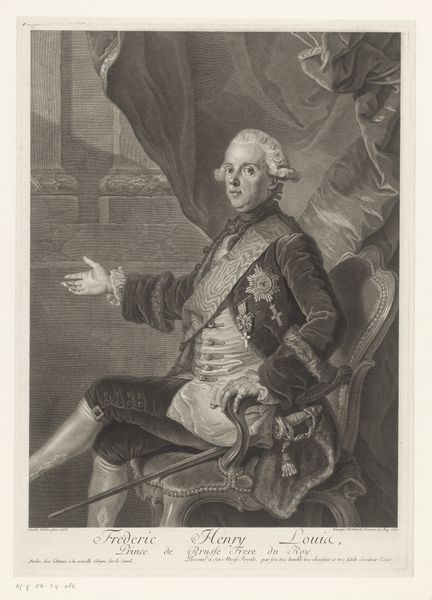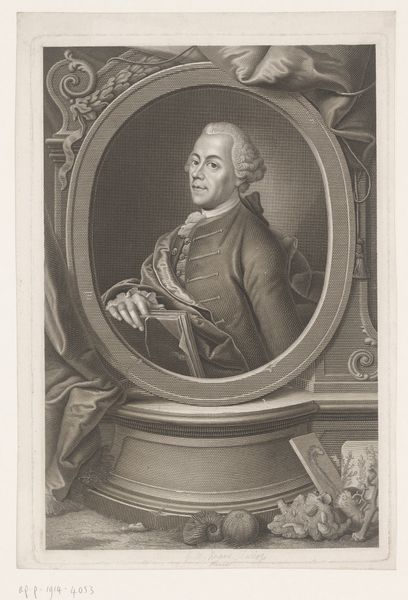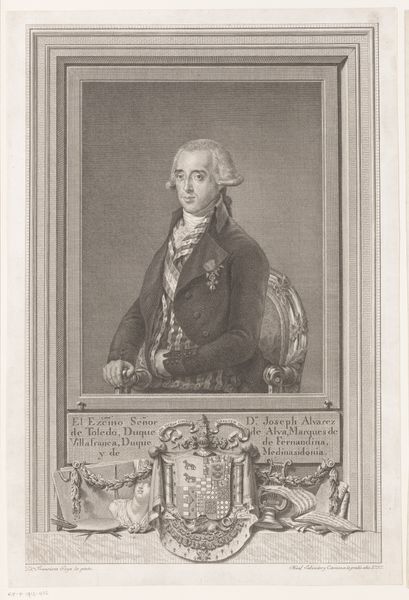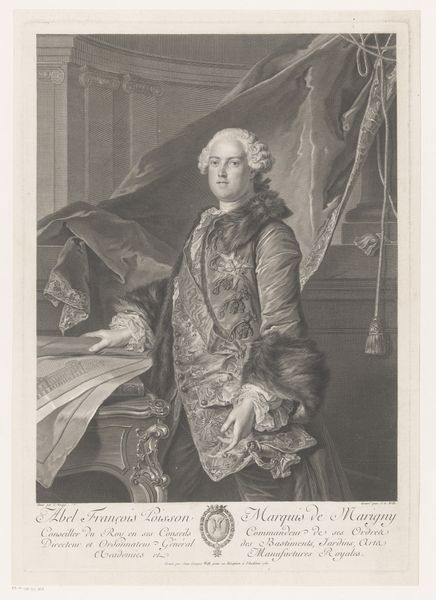
Portret van de Russische gezant aan het Saksische hof en geleerde vorst Alexander Beloselsky c. 1770 - 1819
0:00
0:00
Dimensions: height 618 mm, width 413 mm
Copyright: Rijks Museum: Open Domain
Christian Gottfried Schultze made this print of Alexander Beloselsky, the Russian envoy to Saxony, sometime in the late eighteenth or early nineteenth century. But this is no mere portrait; rather, it’s a carefully constructed image that speaks to the sitter’s status and intellectual pursuits. The setting itself is telling. Beloselsky is surrounded by symbols of learning: books, a writing desk, and even a classical sculpture looming in the background. These are all visual cues that establish him not just as a diplomat but as a man of letters, deeply engaged with the intellectual currents of his time. The Russian presence in Saxony at this time was a dance of diplomacy and power projection, and this image seems designed to bolster Russia’s cultural standing on the European stage. Understanding the print’s full meaning requires looking into the social and political history of 18th-century Europe. Primary sources, like letters and diplomatic records, can provide context to the relations between Russia and Saxony. By situating the image in its time, we see how art serves as a tool for shaping perceptions and reinforcing power structures.
Comments
No comments
Be the first to comment and join the conversation on the ultimate creative platform.
